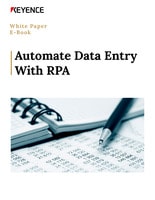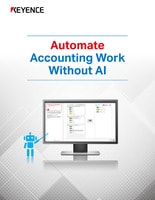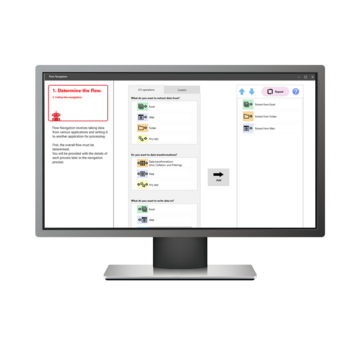RPA (Robotic Process Automation)
Supply Chain & Logistics Automation with RPA

The supply chain and logistics department is a cornerstone of modern business operations, responsible for managing everything from procurement and inventory management to order fulfillment and shipment tracking. However, many supply chain tasks involve repetitive, manual processes that can slow down operations, lead to human error, and increase costs. Robotic Process Automation (RPA) provides a solution by automating routine tasks, ensuring faster, more accurate, and more efficient operations across the supply chain.
RPA leverages software robots to perform tasks such as processing orders, updating inventory records, and managing shipments. By automating these processes, RPA allows supply chain teams to focus on more strategic initiatives while improving the overall performance of the supply chain.
Discover more about this product.
Click here to book your demo.

Common Challenges in Supply Chain & Logistics & How RPA Helps Overcome Them
Order Processing Delays
Order processing often involves manual tasks such as data entry, order verification, and inventory checks, which can lead to delays and errors. RPA can automate the entire order-to-fulfillment process, ensuring that orders are processed quickly and accurately, and reducing lead times.
Inventory Management Inefficiencies
Maintaining accurate inventory records can be challenging, particularly when dealing with large volumes of goods or working with third-party logistics (3PL) providers. RPA can automatically update inventory systems in real time, ensuring that stock levels are always accurate and that inventory is replenished when needed.
Shipment Tracking and Notifications
Keeping track of shipments and providing timely updates to customers can be a complex task. RPA can automate the tracking of shipments, providing real-time updates and notifying customers of delays or changes in delivery schedules.
Supplier and Vendor Management
Managing relationships with suppliers and vendors often involves coordinating purchase orders, verifying invoices, and ensuring timely payments. RPA can automate many of these tasks, reducing administrative workload and improving supplier collaboration.
Data Entry and Reporting
Data entry is a critical part of supply chain operations, but it is also prone to errors and delays. RPA can automatically extract and input data from invoices, orders, and shipping documents, ensuring that all records are up-to-date and accurate.
Benefits of RPA for Supply Chain & Logistics Departments
- Improved Efficiency: Automating repetitive tasks such as order processing and inventory updates allows teams to focus on more strategic tasks, improving the overall efficiency of supply chain operations.
- Cost Savings: RPA reduces the need for manual intervention in routine tasks, allowing businesses to cut operational costs and allocate resources more effectively.
- Faster Order Fulfillment: By automating order processing and shipment tracking, RPA ensures that products are delivered to customers faster, improving customer satisfaction and reducing lead times.
- Enhanced Accuracy: RPA eliminates human errors in data entry, inventory updates, and reporting, ensuring that supply chain data is accurate and reliable.
- Better Supplier Collaboration: By automating supplier management tasks, businesses can foster better relationships with vendors, ensuring timely deliveries and payments.
Integrating RPA into Supply Chain & Logistics Operations
RPA integrates seamlessly with a variety of supply chain management systems, including commercial, off-the-shelf solutions as well as homegrown, custom platforms. By integrating RPA with Enterprise Resource Planning software, Customer Relationship Management systems, and inventory management platforms, businesses can automate end-to-end supply chain processes.
Designed for Business Users
Unlike traditional automation tools that require scripting or IT involvement, our platform is no-code and intuitive. Users can build and manage their own automations using drag-and-drop logic and built-in recording features. Whether you’re automating simple tasks or complex workflows, you can do it without advanced technical training – learn more about how RPA works.
Who Benefits the Most?
- Supply Chain Managers: Automate routine tasks like order processing, inventory management, and shipment tracking to improve overall supply chain efficiency and reduce operational costs.
- Logistics Teams: RPA can help manage shipments, track deliveries, and update customers, ensuring timely and accurate communication.
- Procurement Teams: Automate vendor management tasks such as order creation, invoice processing, and payment, improving supplier relationships and reducing administrative overhead.
- Customer Service Teams: Automate shipment tracking and provide real-time updates to customers, improving customer satisfaction and reducing the workload on customer service representatives.
With RPA, supply chain and logistics departments can operate more efficiently, with improved accuracy, reduced operational costs, and better supplier relationships. By automating routine tasks, teams can focus on strategic activities that drive business growth.
FAQs
How Does RPA Improve Order Processing?
RPA can automatically extract order details, verify customer information, update inventory levels, and initiate order fulfillment. This significantly reduces the time it takes to process orders and minimizes human errors.
Can RPA Automate Inventory Management?
Yes, RPA can integrate with inventory management systems to update stock levels in real time, helping prevent stockouts and overstocking, and ensuring that inventory records are always accurate.
How Does RPA Help With Shipment Tracking?
RPA can automate the tracking of shipments, providing real-time updates on delivery status and notifying customers of any delays or changes in delivery schedules.
We’re here to provide you with more details.
Reach out today!

Related Downloads
Related Products
Scroll




